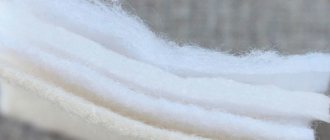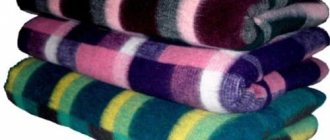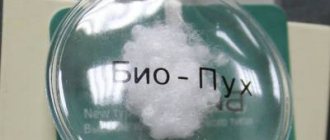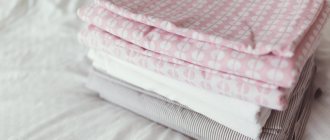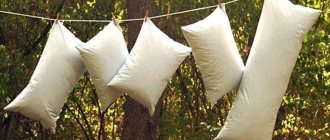Recommendations on how to starch fabric
Bedding that has undergone this treatment may chafe the skin. Therefore, you need to be able to properly starch home textiles in an automatic washing machine.
Adviсe:
- It is necessary to take into account the type of fabric. It is advisable to start starching cotton or linen products. Similar procedures are great for cambric, satin, chintz or calico. However, not every fabric can be starched without harm. Woolen home textiles should not be treated with paste. Synthetic fibers in an automatic washing machine also do not tolerate starch well. Such products may lose their natural colors;
- You need to choose the starch correctly. You can use rice, wheat, corn or any other starch you like. However, it will be most convenient to starch things with potato starch. This product is relatively cheap, thickens well and is bright white compared to corn starch;
- It is necessary to regulate the concentration of the substance. The technology for producing the solution is entirely determined by the material of the fabric being processed. You can starch bed linen in an automatic washing machine in three available ways: soft, medium, hard.
You can only starch clean things; before such a procedure, it is advisable to remove all stains from the bed linen. You can definitely use hydrogen peroxide to remove wine, grease, or coffee stains.
Ironing and starching bed linen
Good morning. Do we always iron and starch bed linen , how to do it correctly and whether it is necessary.
Some housewives do not iron their bed linen, much less starch it, and I wanted to know why starch linen is at all, what is the benefit of it? After washing, housewives begin to iron their clothes, out of habit. Because this is what their mothers did, as if they were performing a ritual, but is it possible not to iron clothes. I read several articles and found a lot of interesting things, I want to share them.
In past times, our grandmothers washed by hand, starched and ironed. Nowadays, laundry is rarely starched.
Why do you need to starch your laundry? To ensure that the laundry is starched, after washing it must be rinsed in a solution of water and starch paste. The linen is soaked in this paste, then it is wrung out and dried in a straightened form. Linen must be ironed, as this forms a starch film on it, which prevents rapid contamination. Therefore, you need to wash less often and the linen wears out less.
A starched item wrinkles less and is easier to wash when washed, because soapy water washes away the starch along with the dirt. This results in a better quality wash. Depending on the type of fabric and the degree of starch, it can be divided into three degrees - weak, medium and strong. There are several types of starch sold in stores - corn, wheat, potato and rice. For starching, any will do and it doesn’t matter much.
How to prepare the paste - first you need to dissolve the dry starch in a small container, then pour the solution into boiling water, stirring constantly. When the solution becomes homogeneous and looks like glue, turn it off and filter through a sieve or cheesecloth so that there are no lumps. Pour into a bowl of water and rinse the laundry. Light starch is soft and suitable for thin fabrics (chiffon and cambric). This is the kind of underwear that does not require a hard seal, but must be protected from dirt and to maintain its shape. To do this, prepare a weak solution - 1 tsp. for 1 l. water. The cooking method is always the same. To starch, rinse the laundry in the solution, wring it out lightly and dry it flat. It is better to iron clothes in a semi-damp state with an iron slightly heated or slightly above average, so that the iron does not stick to the fabric.
For medium starch you need to make a solution of 1 tbsp. l., per 1 liter of water and it is suitable for shirts, tablecloths, napkins and bed linen. This solution can be used to starch embroidered items, knitwear and lace. The method for preparing the starch solution remains the same. For strong starch, make a solution from large ingredients. First, dissolve 1 tsp of borax. in 1 glass of hot water. For 1 liter of water you need 2 tbsp. starch. We prepare the solution according to the previous method, only at the end we add dissolved borax.
This solution is used if things need to be given a certain shape, for example, petticoats under a wedding dress. You can starch certain parts of a shirt, such as cuffs or collars, so that they don’t wrinkle too much, keep their shape and don’t get dirty quickly. Stores sell a spray with added starch, this is very convenient when you need to quickly starch individual parts of things. The spray is sprayed onto items before ironing. In modern times, there is another simple method of starching things - this is in a washing machine. To do this, prepare the paste according to the previous method and pour it into the rinsing compartment, where the conditioner is poured and the washing mode is turned on. When starching, you must remember that it is useless to do this if you do not iron it. It is necessary to iron, only after this a starch film will form.
For starching, you can use special detergents that contain starch - this is an even simpler method. Do I need to iron my clothes? Many people believe that if you starch and iron your linen, it will stop breathing. It is not necessary to iron it, just straighten it well when drying, do not overdry it and fold it carefully, then under the pressure of the linen on top of each other in the closet it will be no worse than ironed.
Advantages of ironing: Using a hot iron kills germs and mite larvae. This is necessary if when washing clothes the water is below sixty degrees. The aesthetic appearance of leucorrhoea is better. Ironing increases wear resistance because... When processed with a hot iron, the fabric fibers melt, which prevents them from fluffing and tearing. Ironing increases the softness of the fabric. Items intended for babies and small children must be ironed on both sides. Arguments that ironing is not useful: Ironing reduces hygroscopicity. Scientists have proven that during sleep a person consumes up to 200g. produces sweat and ironing will prevent it from being absorbed. This will disrupt the temperature balance, which can lead to illness. After ironing, items acquire static electricity. It leads to sleep disturbances and fatigue accumulates in a person. Currently, air conditioners are offered for sale that soften laundry and if it is hung correctly and folded carefully, there is no need to iron it. Modern washing machines have ironing modes; using them you can do without ironing your clothes. You cannot iron terry cloth, because... it will become tough and less fluffy.
In this article we looked at the question of whether it is necessary to starch and iron laundry. There is no definite answer to this question, and housewives decide for themselves whether they should iron and starch their linen or not. See you.
Cleanliness and comfort in the house
In what ways can you starch things?
In practice, different amounts of solutions are used in an automatic washing machine. However, in order to starch bed linen in a suitable way, you will need to use the same sequence of actions:
- Starch is added to a small container and filled with a small amount of water;
- It is necessary to stir the ingredients until a homogeneous mass without lumps is formed;
- You need to boil some more water;
- Concentrated starch is gradually added to boiling water, everything is stirred, and then the fire is turned off;
- The resulting paste should cool slightly.
This is the entire procedure for preparing a product that allows you to starch bed linen at home.
How to make a starch solution
To process a large number of washed items, several solutions of different concentrations are prepared. The same paste cannot be used to make a hard chef's hat and starch bed linen. Depending on the desired hardness, the proportions of liquid and starch are changed.
The process of preparing the starching agent itself remains the same for all solutions:
- In a small bowl, mix the powder with 200 ml of cool water.
- The mass is stirred thoroughly, leaving no lumps.
- The remaining volume of liquid is heated in a saucepan until it bubbles.
- After boiling, carefully pour in the concentrated paste, stirring all the time. Stop heating immediately.
- Leave the paste to cool.
Soft solution
After this treatment, things acquire elasticity and a slight characteristic crunch. But they will not retain their shape, the material will not become solid to the touch. A soft solution for starching clothes is used for women's blouses and blouses, chiffon dresses, men's shirts, bed linen, medical scrubs, products made from cambric and gauze.
The working solution is prepared from 2 tsp. starch and 2 liters of water. After cooking, pour it into a basin of water and put things in it for 2 minutes. Then they take it out and hang it to dry, after squeezing and shaking it.
Important! Dry starched items away from heating appliances.
Medium hardness
Medium concentration starches are used for lace items. This solution is used to treat tablecloths or napkins, furniture covers, curtains, school aprons and bows, and denim shoes. The solution is made from 2 tbsp. l. starch and 2 liters of water. Additionally add 1 tsp. salt to give things shine. The procedure itself is performed in the same way as in the case of soft processing.
Saturated solution
With a concentrated product you can starch individual parts of things: collars, cuffs on men's shirts, skirts, petticoats for dresses, chef's hats, fabric decor, crocheted shoes. The solution is made using classical technology: dilute 5 tbsp in 2 liters of water. l. powder. Things are processed in the usual way.
Useful tips
Let's look at some useful tips:
- To make the white fabric shine beautifully, you can add a little table salt to the solution;
- It is extremely undesirable to starch fabric with floss embroidery. The fibers will shed and become tangled with each other;
- You need to add a little turpentine to the paste so that the sole of the iron does not stick to the fabric during ironing;
- It is highly undesirable to dry starched items in the cold. It is better to hang starched bed linen indoors.
Now anyone can figure out how to starch bed linen in an automatic washing machine.
Recommendations for drying and ironing
[blok_5_h2]
To ensure that the final result of your efforts is pleasing to the eye, it is important to properly dry and iron starched items. Basic recommendations:
- Products must be dried in a ventilated area. It is advisable not to place them in direct sunlight, on heating devices or in frost.
- It is better to dry shirts, dresses and bed linen in an upright position on hangers and lines, respectively. They should not be pressed too hard to prevent creases from forming.
- Openwork napkins and lace should be dried horizontally on a terry towel. They need to be well straightened, aligning all the elements, and pin the edges with pins. You can also use hoops and wooden frames.
- It is advisable to iron the products in a slightly damp state with a warm iron without steam, placing a thin cotton cloth or gauze on top to avoid sticking. Items with embroidery must be ironed from the inside out. Dried clothes are almost impossible to iron.
Starching textiles is an affordable way to make them look fresher and more attractive. It is important to choose the correct solution concentration depending on the type of fabric, level the wet product and iron it in time before it is completely dry. Dark wardrobe items, synthetics and underwear should not be subjected to this treatment. If you don’t like the effect of starching, just wash the item.
How can starch harm you?
Some experienced housewives do not recommend starching laundry either in a washing machine or by hand. Their fears are truly justified. When bed linen is starched, air does not pass through the fabric well because the spaces between the fibers become clogged with the substance.
As a result, the fabric does not absorb moisture well and does not allow the body to breathe. This contributes to feelings of discomfort during sleep. In addition, there is a high probability of mold or mildew formation. Therefore, it is highly undesirable to starch bedding.



